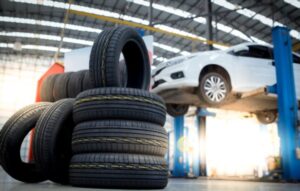Tire maintenance is a crucial aspect of car ownership that is often overlooked. Ensuring your tires are properly inflated not only contributes to a smoother ride but also promotes fuel efficiency and extends the life of your tires. In this article, we’ll explore the common causes of tires losing air and provide practical solutions for fixing these issues. This guide is designed for everyday drivers who may not necessarily be car enthusiasts but still want to keep their vehicles in tip-top shape.
Common Causes of Tires Losing Air
Punctures and Cuts
One of the most frequent reasons for a tire losing air is a puncture caused by a sharp object like a nail or screw. These objects can easily become embedded in your tire, causing a slow leak or even a sudden flat. Additionally, potholes, debris, and rough surfaces can lead to cuts or tears in your tire’s sidewall or tread, resulting in air loss.
Valve Stem Leaks
Over time, the rubber valve stems that keep air inside your tire can become worn, cracked, or deteriorated, leading to a slow air leak. Accidental damage, such as over-tightening the valve cap or impact with debris, can also cause valve stem leaks.
Bead Leaks
The bead is the part of the tire that sits against the rim of the wheel. Moisture and salt can cause the rim to corrode over time, leading to an improper seal and air loss. Moreover, if a tire is not mounted correctly, the bead may not form a tight seal against the rim, causing a leak.
Tire Aging and Structural Damage
As tires age, the rubber can become brittle and develop cracks in the sidewall, allowing air to escape. In some cases, the tread can separate from the tire casing, causing air loss and potentially leading to a dangerous blowout.
How to Identify the Cause of Air Loss
Regularly inspect your tires for any visible signs of damage, such as punctures, cuts, or cracks. To find less obvious leaks, you can perform the soapy water test by mixing dish soap and water in a spray bottle and generously spraying your tire, focusing on the areas where leaks are suspected. Bubbles will form where air is escaping. In a quiet environment, you can sometimes hear a faint hissing sound as air escapes from a leak.
How to Fix a Leaking Tire
Puncture Repair
For small punctures, a tire plug or sealant can provide a temporary solution. These methods should only be used as a short-term fix until a more permanent repair can be performed. For a more lasting solution, a professional can patch the puncture from the inside of the tire or, in severe cases, replace the tire entirely.
Fixing Valve Stem Leaks
A simple fix for a leaking valve stem is replacing the valve core, which can be done using a valve core tool. If the entire valve stem is damaged or worn, it may need to be replaced, which typically requires removing the tire from the rim.
Addressing Bead Leaks
To fix bead leaks, the bead area should be cleaned and sealed. This can often be done by a professional, who will remove any corrosion or debris from the rim, apply a bead sealer, and then re-mount the tire. In some cases, the tire may need to be re-mounted to ensure a proper seal.
Handling Tire Aging and Structural Damage
When it comes to tire aging and structural damage, the best course of action is often to replace the damaged or aged tires. Regular tire maintenance, such as checking tire pressure, rotating tires, and inspecting for damage, can help prevent these issues and keep your tires in optimal condition for longer.
Conclusion
Addressing air leaks in your tires promptly is essential for maintaining a safe and efficient driving experience. By understanding the common causes of tire air loss and how to fix them, you can take proactive steps to ensure your tires stay in good shape. Regular tire maintenance is crucial for preventing issues and extending the life of your tires. As a responsible car owner, keep an eye out for potential problems and take action when needed to ensure a smooth and safe ride.


